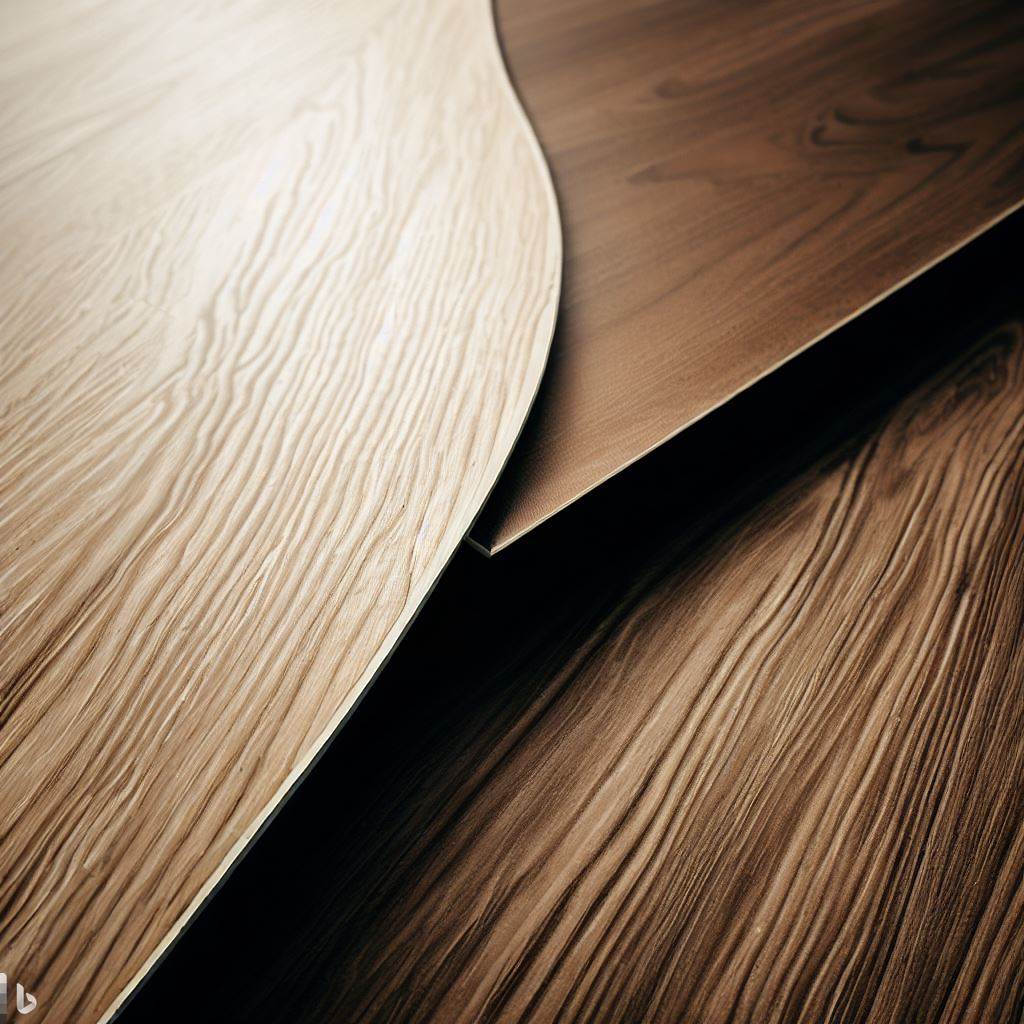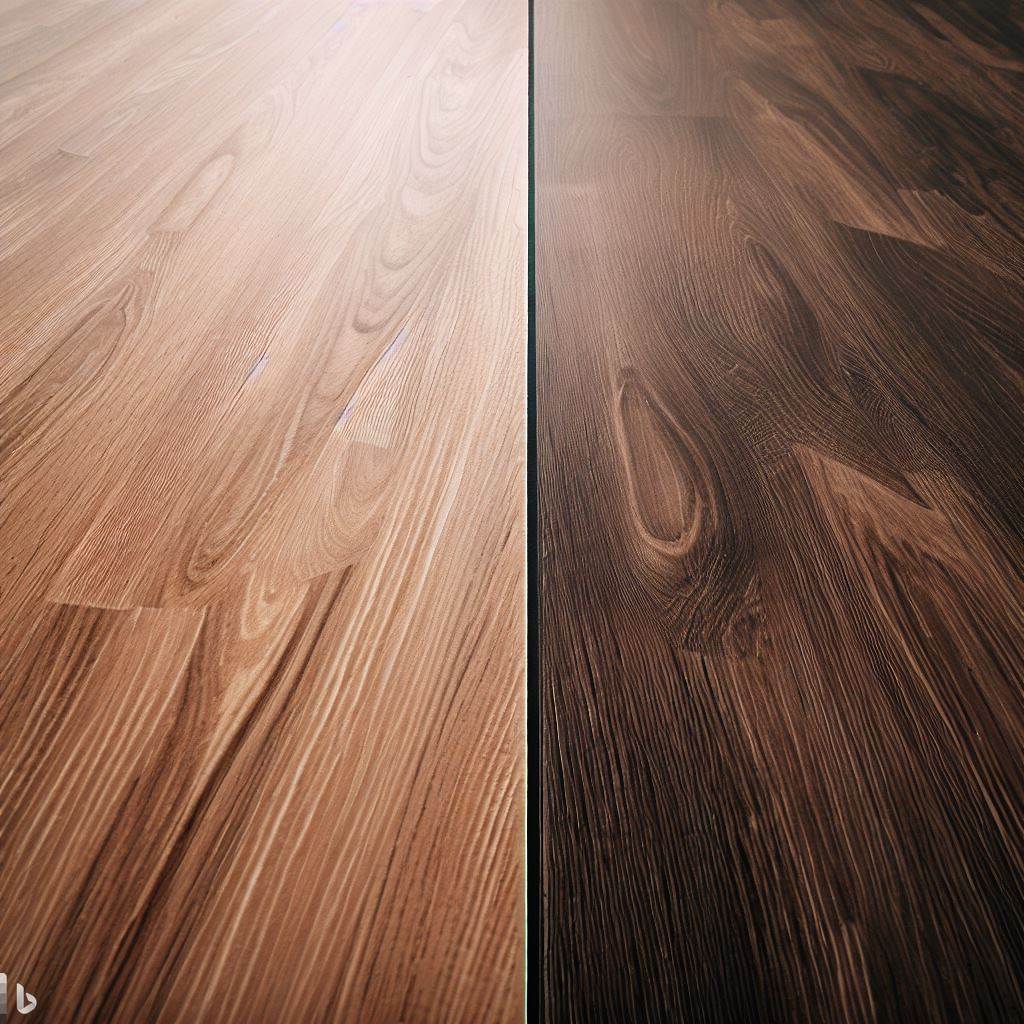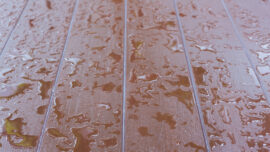
Laminate vs Vinyl Flooring: Why Laminate is Making a Comeback in 2025
Last Updated on January 18, 2025 by Jeff Cappon
When it comes to flooring options, laminate and vinyl have been popular choices for homeowners for many years. However, in recent times, laminate flooring has been experiencing a significant resurgence in popularity.
With advancements in technology and a renewed focus on sustainable options, laminate flooring is making a comeback in 2025. In this blog post, we will delve into the world of laminate flooring, understanding its composition and highlighting the reasons behind its newfound popularity while also providing takeaways as to whether vinyl still may be the best choice for you.
What is laminate flooring?
Laminate flooring is a synthetic flooring product that simulates the look of real hardwood, stone, or tile. It consists of multiple layers fused together using high-pressure techniques.
The top layer, known as the wear layer, is a protective coating that provides durability and resistance against scratches, stains, and fading. Beneath the wear layer, there is a decorative layer that features a high-resolution image of the desired flooring style, providing a realistic appearance.
Advantages of Laminate Flooring
Durability and Scratch Resistance: Laminate flooring is highly durable, making it an ideal choice for high-traffic areas in homes. The wear layer protects the floor from scratches, scuffs, and dents caused by everyday activities, such as moving furniture or pets’ claws.
Realistic Appearance and Design Options: Thanks to advancements in printing technology, laminate flooring now offers incredibly realistic visuals. From natural wood grains to intricate tile patterns, laminate can mimic a wide range of materials, allowing homeowners to achieve the desired aesthetic without the associated costs.
Cost-Effectiveness: One of the primary advantages of laminate flooring is its affordability compared to hardwood or stone alternatives. Laminate can provide the look of expensive materials at a fraction of the price, making it a budget-friendly option for those seeking a high-end appearance without breaking the bank.
Easy Installation and Maintenance: Laminate flooring is designed with ease of installation in mind. Most laminate products feature a click-lock system, allowing for straightforward installation from professional flooring contractors. Additionally, laminate requires minimal maintenance, as it is resistant to stains and easy to clean with regular sweeping and occasional damp mopping.
As homeowners increasingly seek flooring options that combine durability, aesthetics, affordability, and ease of maintenance, laminate flooring has emerged as a frontrunner in the market. Its ability to replicate the appearance of natural materials convincingly, coupled with its practical advantages, has contributed to its resurgence in popularity.
Related: Choosing subfloor for hardwood, tile and laminate floors
What is vinyl flooring (aka luxury vinyl plank)?
Before diving into the details of vinyl, it is important to distinguish that the more modern type of vinyl is called luxury vinyl plank, or LVP, whereas the older material is often referred to as just “standard vinyl.” Most instances of vinyl flooring these days are LVP, and that is what we are referring to in this post.
Vinyl flooring, like laminate, is a synthetic flooring material. It is made from PVC (polyvinyl chloride) and other additives, which give it its unique characteristics. Just like laminate, vinyl flooring has its own set of advantages that have made it a popular choice among homeowners.
Composition of Vinyl Flooring
Vinyl flooring is composed of several layers.
- Wear layer: The topmost layer, known as the wear layer, is a transparent protective coating that resists scratches, stains, and wear.
- Design layer: Below the wear layer is the design layer, which contains the printed pattern or design, ranging from wood grains to stone textures.
- Core and bottom: The core layer provides stability and durability, while the bottom layer, often referred to as the backing layer, adds additional support and moisture resistance.
Advantages of Vinyl Flooring
Water resistance and Moisture Resistance: Vinyl flooring is highly resistant to water and moisture, making it suitable for areas prone to spills or high humidity, such as kitchens, bathrooms, and basements. Its water-resistant properties help prevent damage, warping, or swelling that can occur with other flooring options.
Wide Range of Styles and Patterns: Vinyl flooring offers an extensive array of design options. Whether you prefer the classic look of hardwood, the elegance of stone, or unique patterns and colors, vinyl can cater to various aesthetic preferences, allowing homeowners to find the perfect fit for their interior design.
Comfort and Warmth Underfoot: Vinyl flooring provides a cushioned surface underfoot, offering a comfortable and soft feel. It can be particularly beneficial in areas where you spend a lot of time standing, reducing fatigue and strain on your feet and joints. Additionally, vinyl flooring has insulating properties, which can help maintain a cozy atmosphere in your home.
Low Maintenance and Easy Cleaning: Vinyl flooring is known for its low maintenance requirements. It is resistant to stains, scratches, and fading, making it a practical choice for busy households or those with children and pets. Regular sweeping or vacuuming, along with occasional damp mopping, is typically all that’s needed to keep vinyl floors looking clean and fresh.
Vinyl flooring prices
The average cost of vinyl flooring can vary depending on various factors such as the quality of the vinyl, the brand, the thickness, the design or style chosen, and the installation method.
How long do vinyl floors last
Vinyl floors are known for their durability, and with proper care and maintenance, they can have a long lifespan. On average, vinyl floors can last between 15 to 20 years, although some high-quality vinyl products can last even longer.
Related: Vinyl Flooring Showdown: LVT vs LVP Flooring
The Comeback of Laminate Flooring
Flooring contractor’s hot take:
Laminate is making a comeback because Luxury Vinyl Plank is not as hearty. You cannot caulk the bottom of baseboards with vinyl, and vinyl is much more problematic when house slabs have higher moisture content. Laminate is thicker so the click and lock is stronger as well.
In recent years, there has been a shift in interior design trends, with a growing appreciation for natural elements and textures. Laminate flooring has adapted to this demand by enhancing its technology to provide incredibly realistic visuals that mimic the look and feel of hardwood, stone, and tile. Homeowners can now achieve the desired aesthetic without the maintenance and cost associated with natural materials, making laminate an attractive choice.
Enhanced Technology and Realistic Visuals in Laminate Flooring
Advancements in manufacturing and printing technology have revolutionized the appearance of laminate flooring. High-definition printing techniques allow for intricate details, vibrant colors, and realistic textures, resulting in a flooring surface that closely resembles natural materials.
These advancements have played a significant role in the resurgence of laminate flooring, attracting homeowners who desire the beauty of hardwood or stone but prefer the practicality of laminate.
Environmental Considerations and Sustainable Options
In an era where environmental consciousness is increasingly valued, laminate flooring has made strides in offering sustainable options. Many manufacturers are using eco-friendly materials, such as recycled wood fibers and low-emission adhesives, to produce laminate flooring.
Additionally, laminate is typically composed of several layers, which allows for easy replacement of damaged sections without the need to replace the entire floor, reducing waste and promoting sustainability.
Affordability and Cost-Saving Benefits
Laminate flooring has long been recognized for its cost-effectiveness compared to natural materials like hardwood or stone. The resurgence of laminate in 2025 can be attributed, in part, to homeowners seeking budget-friendly alternatives without compromising on style and durability. With laminate, homeowners can achieve the desired look at a fraction of the cost, allowing them to allocate their budget to other aspects of their home improvement projects.
Furthermore, laminate flooring offers cost-saving benefits in the long run. Its durability and scratch resistance ensure longevity, reducing the need for frequent replacements. Additionally, laminate’s low maintenance requirements translate to savings in cleaning products and professional services, making it a financially sensible choice.
Laminate flooring prices
The average price of laminate flooring can vary depending on several factors such as the quality of the laminate, the brand, the thickness, and the design or style chosen.
How long do laminate floors last?
The lifespan of laminate floors can vary depending on several factors, including the quality of the laminate, the amount of foot traffic it experiences, and the level of maintenance it receives. On average, laminate floors can last between 15 to 25 years.
Laminate flooring vs vinyl: comparing key factors
When choosing between laminate and vinyl flooring, it’s important to consider several key factors to determine which option best suits your needs and preferences. Let’s compare these factors:
Durability and Resistance to Wear and Tear:
- Laminate: Laminate flooring is highly durable and resistant to scratches, stains, and fading. It can withstand moderate to high foot traffic and is suitable for most areas of the home.
- Vinyl: Vinyl flooring is also durable and resistant to scratches and stains. It is highly resilient and can handle heavy foot traffic. Additionally, vinyl’s water resistance properties make it ideal for moisture-prone areas.
Visual Appeal and Variety of Designs:
- Laminate: Laminate flooring offers a wide range of designs and realistic visuals, including options that closely mimic the look of hardwood, stone, or tile. It provides an array of styles to suit different aesthetic preferences.
- Vinyl: Vinyl flooring also offers a diverse selection of designs, including realistic wood and stone patterns. It provides versatility in design choices and can be found in various colors and styles.
Installation Process:
- Laminate: Laminate flooring often features a click-lock installation system and can be installed as a floating floor without the need for glue or nails.
- Vinyl: Vinyl flooring can be installed in different ways, including glue-down, loose lay, or click-lock methods.
Maintenance Requirements and Long-Term Care:
- Laminate: Laminate flooring is relatively low maintenance. Regular sweeping or vacuuming, along with occasional damp mopping, is typically sufficient to keep it clean. It’s important to avoid excessive moisture on laminate floors.
- Vinyl: Vinyl flooring is also easy to maintain. Regular sweeping or vacuuming and occasional mopping with manufacturer-recommended cleaners help keep vinyl floors looking their best. Its water resistance nature makes it resistant to stains and spills.
Water Resistance and Moisture Resistance Capabilities:
- Laminate: While laminate is generally not waterproof, some manufacturers offer water-resistant laminate options. However, prolonged exposure to moisture should still be avoided.
- Vinyl: Vinyl flooring is inherently water-resistant, depending on the specific product. This makes it an excellent choice for areas prone to moisture, such as bathrooms, kitchens, or basements.
Contact the Experts
If you live in the northern Dallas, TX area and are looking for new laminate or vinyl flooring and need professional materials and installation, contact the pros at GC Flooring Pros for a free in-house estimate.







